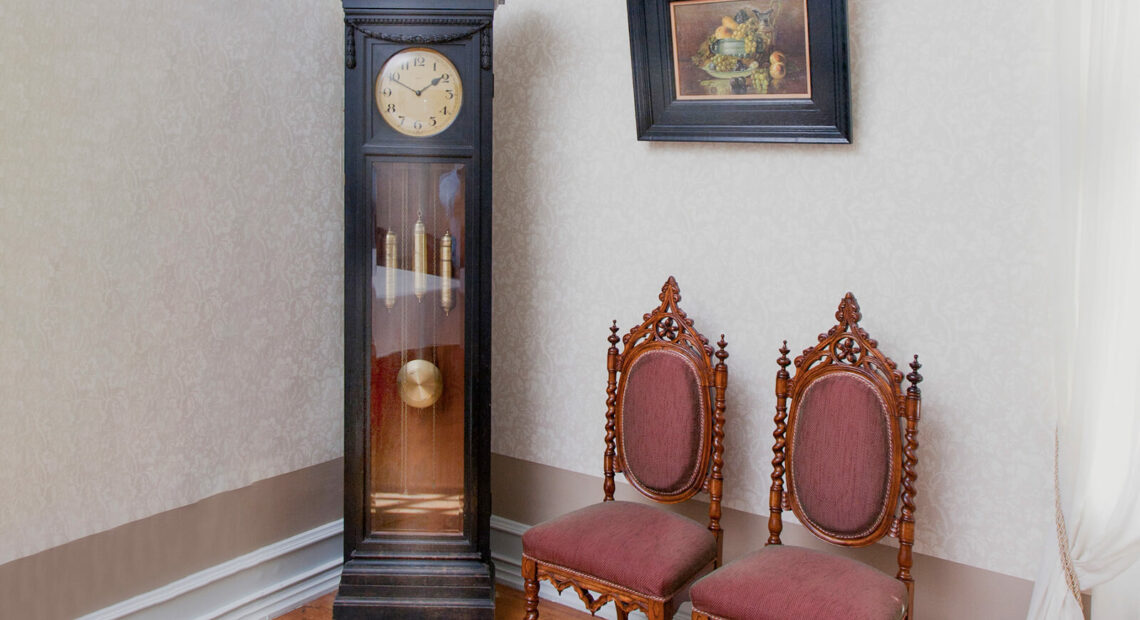The Timeless Charm of Grandfather Clocks: A Stroll through History

When it comes to classic timepieces that evoke a sense of nostalgia and elegance, few can rival the allure of a grandfather clock. Standing tall and proud, these magnificent clocks have been a staple in homes and public spaces for centuries. But have you ever wondered why they are called “grandfather clocks”? In this blog, we will delve into the origins and enduring appeal of these timeless treasures.
The Story Behind the Name
The term “grandfather clock” owes its existence to a popular song written by Henry Clay Work in 1876, titled “Grandfather’s Clock.” The lyrics recount the story of a beloved clock that belonged to the songwriter’s grandfather. This sentimental tale captured the hearts of many, and people began associating the clock described in the song with the tall, weight-driven clocks of their own. The name “grandfather clock” stuck, forever intertwining the song’s sentimental imagery with these majestic timekeepers.
A Glimpse into History
While the song may have given rise to the name, the history of grandfather clocks predates “Grandfather’s Clock” by several centuries. Originating in the late 17th century, these clocks were initially referred to as “longcase clocks” or “tallcase clocks” due to their distinctive height and slender design.
Crafted by skilled artisans, these clocks were not only timekeepers but also exquisite pieces of furniture. Their elegant cases, often made from fine woods and adorned with intricate carvings, added a touch of grandeur to any space. The long pendulum and weights, visible through a glass door, added a mesmerizing element of motion to their presence.
Precision and Engineering Marvels
Beyond their aesthetic appeal, grandfather clocks were also marvels of engineering and precision. In an era before the advent of electricity, these clocks relied on mechanical movements powered by hanging weights. The steady ticking of the pendulum, controlled by a regulated escapement, ensured accurate timekeeping.
Craftsmen took great care in designing and constructing these timepieces, striving for optimal performance and longevity. Each clock was a testament to their skill and dedication, with intricate mechanisms that required regular maintenance and care to keep them running smoothly.
Symbolizing Tradition and Continuity
Grandfather clocks became cherished heirlooms, passed down through generations, each telling its own unique story. They symbolized tradition, continuity, and the passage of time. As families gathered around the clock, they marked the hours, days, and years together, creating lasting memories.
The enduring popularity of grandfather clocks is a testament to their timeless charm. Even in the age of digital devices and smart technology, these clocks continue to captivate us with their old-world elegance and craftsmanship. They serve as a gentle reminder of a simpler time when life moved at a slower pace.
A grandfather clock is more than just a timepiece. It is a window into history, a symbol of tradition, and a work of art. From their humble beginnings as “longcase clocks” to their association with the beloved song “Grandfather’s Clock,” these majestic timekeepers have stood the test of time, preserving their allure and enchanting generations.
So, the next time you encounter a grandfather clock, take a moment to appreciate its timeless charm and the stories it silently carries. For within those elegant wooden cases and swinging pendulums, lie echoes of a bygone era—a reminder of the enduring beauty and craftsmanship that continues to captivate us to this day.
Picture Courtesy: Google/images are subject to copyright








